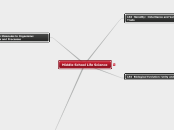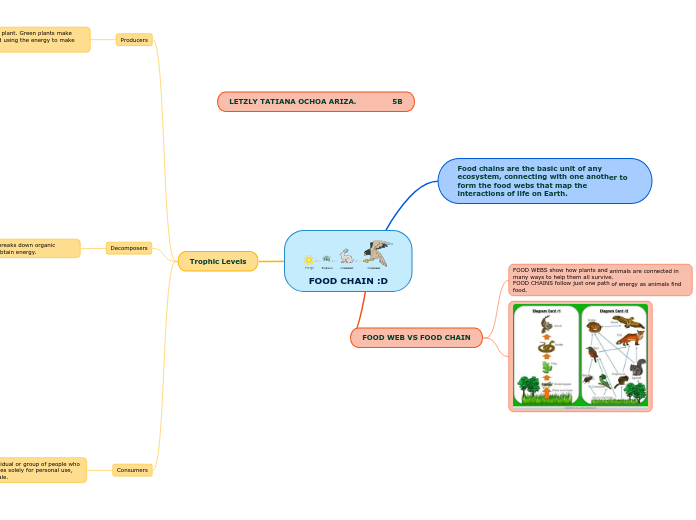Middle School Life Science
LS2 Ecosystems: Interactions, Energy and Dynamics
Evaluate competing design solutions for maintaining biodiversity and ecosystem services.
Engineering Design
7.4D.2 Evaluate proposed solutions to identify how design constraints are addressed.
MS-LS2-4
Construct an argument supported by empirical evidence that changes to physical or biological components of an ecosystem affects populations.
MS-LS2-3
Develop a model to describe the cycling of matter and flow of energy among living and nonliving parts of an ecosystem.
MS-LS2-2
Construct an explanation that predicts patterns of interactions among organisms across multiple ecosystems.
MS-LS2-1
Analyze and interpret data to provide evidence for the effects of resource availability on organisms and populations of organisms in an ecosystem.
6.2L.2 Explain how individual organisms and populations in an ecosystem interact and how changes in populations are related to resources.
LS1 From Molecules to Organisms: Structures and Processes
MS-LS1-8
Gather and synthesize information that sensory receptors respond to stimuli by sending messages to the brain for immediate behavior or storage as memories.
MS-LS1-7
Develop a model to describe how food is rearranged through chemical reactions forming new molecules that support growth and/or release energy as this matter moves through an organism.
MS-LS1-6
Construct a scientific explanation based on evidence for the role of photosynthesis in the cycling of matter and flow of energy into and out of organisms.
Grade 7 ODE 2014 Standard
7.2L.2 Explain the processes by which plants and animals obtain energy and materials for growth and metabolism.
MS-LS1-5
Construct a scientific explanation based on evidence for how environmental and genetic factors influence the growth of organisms.
MS-LS1-4
Use argument based on empirical evidence and scientific reasoning to support an explanation for how characteristic animal behaviors and specialized plant structures affect the probability of successful reproduction of animals and plants respectively.
MS-LS1-3
Use argument supported by evidence for how the body is a system of interacting subsystems composed of groups of cells.
MS-LS1-2
Develop and use a model to describe the function of a cell as a whole and ways parts of cells contribute to the function.
7.2L.1 Explain how organelles within a cell perform cellular processes and how cells obtain the raw materials for those processes.
MS-LS1-1
Conduct an investigation to provide evidence that living things are made of cells; either one cell or many different numbers and types of cells.
6.2L.1 Describe the relationships and interactions between and among cells, tissues, organs and organ systems.
6.1L.1 Compare and contrast the types of cells and components of cells. Describe the functions and relative complexity of cells, tissues, organs and organ systems.
LS4 Biological Evolution: Unity and Diversity
MS-LS4-6
Use mathematical representations to support explanations of how natural selection may lead to increases and decreases of specific traits in populations over time.
7.1L.2 Distinguish between inherited and leaned traits, explain how inherited traits are passed from generation to generation, and describe the relationships among phenotype, genotype, chromosomes and genes.
MS-LS4-5
Gather and synthesize information about the technologies that have changed the way humans influence the inheritance of desired traits in organisms.
MS-LS4-4
Construct an explanation based on evidence that describes how genetic variations of traits in a population increase some individuals' probability of surviving and reproducing in a specific environment.
8.2L.1 Explain how species change through the process of natural selection. Describe evidence for evolution.
MS-LS4-3
Analyze displays of pictorial data to compare patterns of similarities in the embryological development across multiple species to identify relationships not evident in the fully formed anatomy.
MS-LS4-2
Apply scientific ideas to construct an explanation for the anatomical similarities and differences among modern organisms and between modern and fossil organisms to infer evolutionary relationships.
8.1L.1 Explain how genetics and anatomical characteristics are used to classify organisms and infer evolutionary relationships.
MS-LS4-1
Analyze and interpret data for patterns in the fossil record that document the existence, diversity, extinction, and change of life forms throughout the history of life on Earth under the assumption that natural laws operate today as in the past.
LS3 Heredity: Inheritance and Variation of Traits
MS-LS3-2
Develop and use a model to describe why asexual reproduction results in offspring with identical genetic information and sexual reproduction results in offspring with genetic variation.
Grade 6 ODE 2014 Standard
7.1L.1 Compare and contrast sexual and asexual reproduction. Explain why reproduction is essential to the continuation of every species.
MS-LS3-1
Develop and use a model to describe why structural changes to gene (mutations) located on the chromosomes may affect proteins and may result in harmful, beneficial, or neutral effects to the structure and function of the organism.
Grade 8 ODE 2014 Standard









